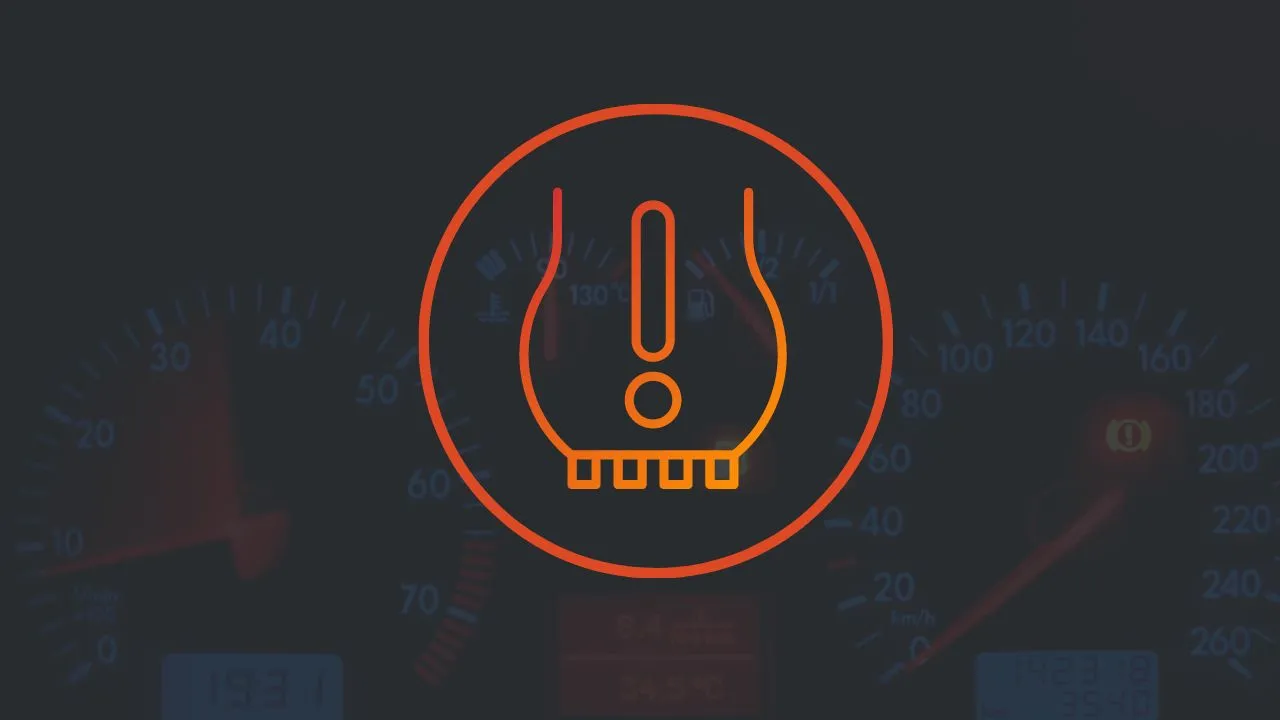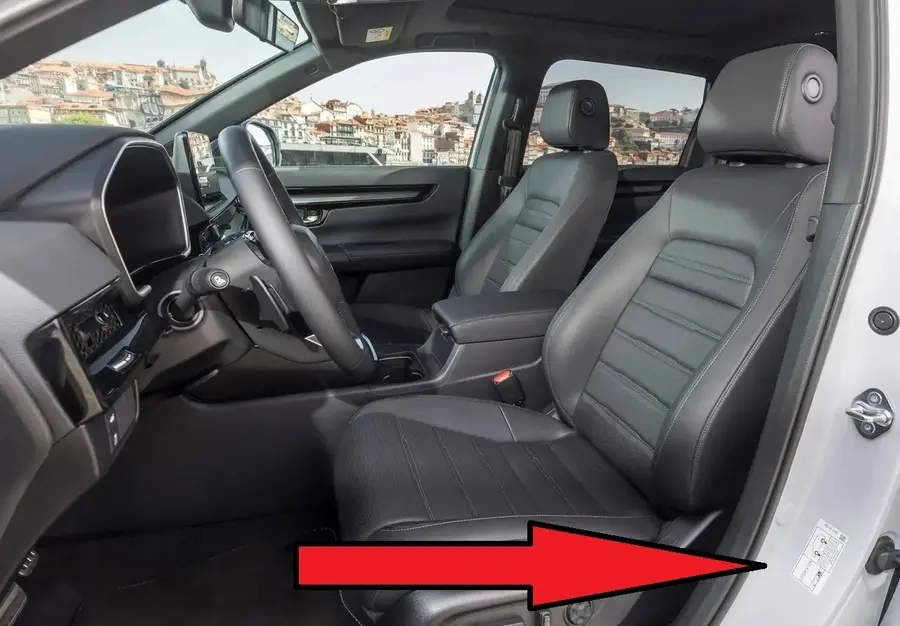How to Reset The Tire Pressure Light On A Honda CR-V
When you see the tire pressure light come on, it could indicate that something is wrong with the tires, with the most likely issue being that they are underinflated. This system alerts you that the tires need immediate attention. However, there are times when you need to reset the system manually in certain situations.
In this quick guide, I will cover the steps to reset the TPMS and explain a few necessary things so you can get back on the road comfortably and quickly.

Steps to Take Before Resetting
When the tire pressure indicator light comes on, it can be annoying, and you’ll want to fix it right away. However, there are things you need to do before resetting the system.
First, check the tire pressure. If the pressure is not correct, make sure to fix it before resetting the light. Here are the detailed steps:
1. Check Your Tire Pressure
The Honda CR-V features an Indirect TPMS system, meaning you can’t see the tire pressure for each wheel individually. The system will only warn you if the tire pressure is not as recommended.
To get accurate readings, you must use a tire pressure gauge. Follow these steps:
- Use a tire pressure gauge
- Take off the valve cap from one tire
- Press the gauge onto the valve stem, making sure no air escapes; otherwise, the reading won’t be accurate
- Remove the gauge and put the valve cap back on
- Check the reading
- Repeat these steps for all four tires to get the readings
2. Correct the Tire Pressure
You can check the label inside the driver’s door to find the correct air pressure for your CR-V tires. Most CR-V models specify a tire pressure between 32 and 36 PSI, depending on the tire position and wheel size.

If you find the tires don’t have enough air, you’ll need to add more. You can use an air compressor or a portable tire inflator to add air at home. If you’re not at home, you can visit the nearest gas station to get air for free.
Here are the steps for putting air in the CR-V tires.
- Take off the cap from the tire’s valve stem
- Don’t lose the cap, Keep the cap in a safe place
- Attach the air hose
- Push down until you hear the air going into the tire
- Hold it for a few seconds
- Monitor the pressure with your tire gauge
- If the pressure is still low, keep adding air
- Once the pressure is correct, put the cap back on
- Repeat for all tires
Do not put too much air in the tire, as exceeding the recommended pressure can be dangerous. If you find too much air in the tire, you will need to release some of it.
All of the above steps can seem quite troublesome, but you can simplify the process by using an electric portable tire inflator. These devices often have an automatic feature that adjusts the air pressure according to the settings you enter, stopping automatically when the correct pressure is reached.
Having an electric portable tire inflator in the backseat is a good investment. I have one and am very happy with it.
Some Points to Note
Before you reset the TPMS on your Honda CR-V, here are a few things to keep in mind:
- You can’t calibrate the TPMS if a compact spare tire is on.
- The calibration process requires approximately 30 minutes of cumulative driving at speeds between 30-65 mph (48-105 km/h).
- If you turn the ignition off and on again during calibration, and the car doesn’t move within 45 seconds, the low tire pressure light might come on for a short time. This is normal and means the calibration isn’t finished yet.
How to Reset
When the air pressure in the tires is correct, the warning light should disappear automatically. However, there are many cases where the warning light doesn’t turn off on its own, and you need to reset it manually. This might be what happened to your CR-V, leading you to this article.
Here are some pointers based on the CR-V model year.
2023-2025 Honda CR-V
If you drive the new six-generation CR-V, here are the steps to reset the TPMS.
Model With 7-in. Color Touchscreen
- Make sure the vehicle is completely stop
- Get the transmission on P and the power mode is in ON
- Press the Home button, and select the settings, then press the left selector wheel
- Roll the left selector wheel find TPMS calibration and press the left selector wheel
- select calibrate
- calibration started
- If the Calibration failed to start message appears, repeat step 5
Model With 9-in. Color Touchscreen
- Make sure the vehicle is completely stop
- Get the transmission on P and the power mode is in ON
- Press the HOME button
- Select Vehicle Settings
- Select TPMS Calibration
- Choose Calibrate or Cancel
- If the “Calibration Failed to Start” message appears, repeat step 4
- The calibration process will be completed automatically
2014-2022 Honda CR-V
Models With Information Display
- Make sure the vehicle is completely stop
- Get the transmission on P and the power mode is in ON
- Press and hold the TPMS button until the low tire pressure/TPMS indicator blinks twice, indicating the calibration process has begun.
Models With Color Audio System
- Make sure the vehicle is completely stop
- Get the transmission on P, and the power mode is in ON
- Press the information button on the steering wheel control, then select Vehicle Setting
- Find the TPMS Calibration and press Enter
- The display switches to the customization setup screen, where you can select Cancel or Calibrate
- Select Calibrate and press Enter
- Calibration Started and will finish automatically
Models With Display Audio
- Make sure the vehicle is completely stop
- Get the transmission on P, and the power mode is in ON
- Select Home
- Select Setting
- Select Vehicle Setting
- Find TPMS Calibrations
- Select Calibrate
- Calibration Started and will finish automatically
2007-2013 Honda CR-V
Earlier CR-V models have the TPMS feature, but the owner’s manual does not include instructions for resetting the light.
If you have fixed the tire pressure issue and the light doesn’t go away automatically, I recommend visiting the dealer for a solution. It shouldn’t be a serious problem that costs a lot of money.
Older Honda CR-V
Older Honda CR-Vs do not have a Tire Pressure Monitoring System, so you won’t find an air pressure warning light.
Since there is no warning system, you should check the air pressure of your CR-V wheels regularly. I usually check the tire condition every time I go on a long trip.
Why and when you Need to Reset
As I mentioned earlier, resetting the tire pressure light is something you should do if you are bothered by the warning light being on. Although eventually, the warning light will disappear after the system resets itself.
The indicator light will usually disappear a few minutes after you fill the tires with the correct amount of air. However, if you don’t want to wait, you can reset it manually.
Additionally, the owner’s manual provides instructions for resetting the tire pressure light in several situations, including:
- After adjusting the pressure in one or more tires
- After rotating the tires
- After replacing one or more tires
If the tire pressure indicator light is on for reasons other than the above, you should have a qualified Honda technician handle it.
Conclusion
Tire pressure is crucial for safe driving, which is why you should never ignore the indicator light. If the light is on, you should immediately check your vehicle’s tires.
Once you are sure that the tire pressure is correct, you can turn off the light and get back on your way.
This is a brief guide from me about turning off the tire pressure indicator light. I hope it helps you better understand how to do it.
